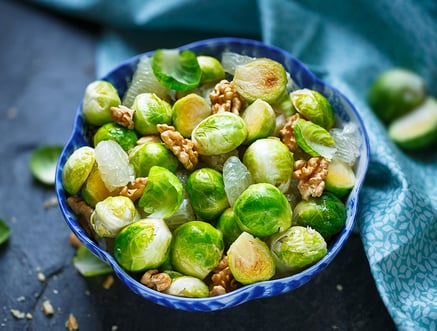 The never-ending cold and dreary winter weather is coming to an end finally. After months of staying in and hibernating on chili, casseroles, soups, and stews, it’s time to break out the fresh and colorful foods! This is the perfect time of year to experiment with more fresh fruits and vegetables that are quick and easy and oh so good for you!
The never-ending cold and dreary winter weather is coming to an end finally. After months of staying in and hibernating on chili, casseroles, soups, and stews, it’s time to break out the fresh and colorful foods! This is the perfect time of year to experiment with more fresh fruits and vegetables that are quick and easy and oh so good for you!
Here are some of my favorite recipes that I am excited about adding into my spring rotation.
Brussels Sprouts Salad
FOR THE SALAD
4 dozen Brussels sprouts (trimmed and sliced thin)
8 oz center-cut bacon (cooked and coarsely chopped)
1 cup pecans, coarsely chopped
1 cup grated Parmesan cheese
FOR THE DRESSING
Juice of 1 lemon
¼ cup maple syrup
½ cup olive oil
1 small shallot (minced)
Salt and pepper to taste
- In a large bowl, toss together the Brussels sprouts, bacon, pecans, and grated Parmesan cheese.
- In a small bowl, whisk together the lemon juice, maple syrup, olive oil, shallot, and salt and pepper until thoroughly combined.
- Pour the dressing over the salad and toss to ensure that all of the ingredients are evenly moistened.
The salad can be served immediately, or refrigerated for up to 4 hours before serving (if making further in advance, keep dressing separate until ready to serve).
***
Eggplant and Goat Cheese Bake
3 thin eggplants, sliced into ¼-inch-thick slices
3 cloves garlic, finely chopped
1–1½ cups medium tomatoes, chopped into 1-inch cubes
4 oz. goat cheese
1⁄3 cup basil, roughly chopped
½ cup olive oil for drizzling
- Preheat oven to 375ºF.
- In a 13 × 9 baking dish, layer the sliced eggplant, overlapping if necessary. Drizzle a little of the olive oil over the eggplant slices and gently toss them to coat.
- Scatter the garlic over the eggplant. Then place the tomatoes evenly over the eggplant.
- Crumble the goat cheese with a knife or your fingers and top the tomatoes. Then place the basil on top.
- Bake 35–40 minutes, or until the eggplant is softened and the cheese is slightly melted. Serve hot.
As Farmers’ markets begin to open, take advantage of fresh and local produce to come up with your weekly meal plans! Challenge yourself each week to try a new fruit or vegetable and base a meal around that choice. Have fun!
This blog was written by Angie Mitchell, RD. To find out more about the NIFS bloggers, click here.


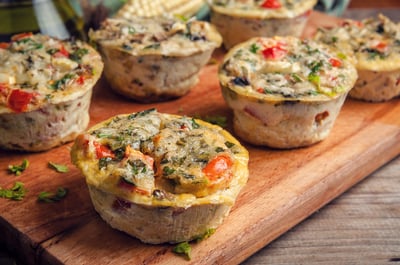
 Every March, the American Academy of Nutrition and Dietetics celebrates
Every March, the American Academy of Nutrition and Dietetics celebrates 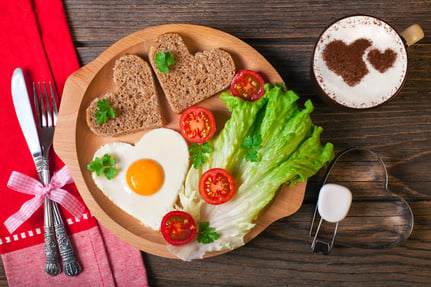 When it comes to nutrition and your heart, the things you hear in the news can be very confusing:
When it comes to nutrition and your heart, the things you hear in the news can be very confusing: If you are like most people, the dreaded
If you are like most people, the dreaded 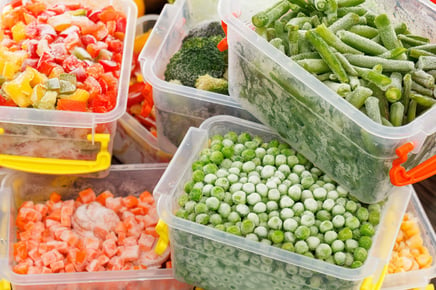 Since you were young you probably have been told to eat your fruits and vegetables. Fruits and vegetables are the nutritional powerhouses of your diet. They offer essential vitamins, minerals, fiber, and phytochemicals that not only keep your body healthy, but also protect against cancer, heart disease, stroke, and other health conditions. During the winter months, fresh fruits and vegetables are more limited and generally more expensive. As a result, many of us turn to canned or frozen options. So are canned and frozen options just as healthy as the fresh produce we consume?
Since you were young you probably have been told to eat your fruits and vegetables. Fruits and vegetables are the nutritional powerhouses of your diet. They offer essential vitamins, minerals, fiber, and phytochemicals that not only keep your body healthy, but also protect against cancer, heart disease, stroke, and other health conditions. During the winter months, fresh fruits and vegetables are more limited and generally more expensive. As a result, many of us turn to canned or frozen options. So are canned and frozen options just as healthy as the fresh produce we consume?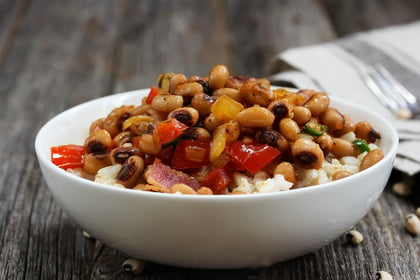 Every year on New Year’s Day my husband’s grandma makes cabbage. She says it’s good luck. I had never heard of this tradition, and then someone else told me they eat black-eyed peas for luck, also. I decided to look into it and there are actually quite a few foods that people eat every year on New Year’s Day hoping that the next year will be prosperous and lucky for them—all because of a meal they consumed on the holiday!
Every year on New Year’s Day my husband’s grandma makes cabbage. She says it’s good luck. I had never heard of this tradition, and then someone else told me they eat black-eyed peas for luck, also. I decided to look into it and there are actually quite a few foods that people eat every year on New Year’s Day hoping that the next year will be prosperous and lucky for them—all because of a meal they consumed on the holiday! Slow Cooker Pork and Sauerkraut with Apples
Slow Cooker Pork and Sauerkraut with Apples This year make an effort to change small things and create healthier habits. You'd be surprised how little changes can lead to big benefits.
This year make an effort to change small things and create healthier habits. You'd be surprised how little changes can lead to big benefits. When my husband and I got married and combined our kitchens, he was appalled at the amount of gadgets that filled my drawers and cabinets. I have always loved the single-use items such as the pineapple peeler and corer, the avocado slicer, the strawberry-top remover, the banana case keeper—and the list goes on and on and on!
When my husband and I got married and combined our kitchens, he was appalled at the amount of gadgets that filled my drawers and cabinets. I have always loved the single-use items such as the pineapple peeler and corer, the avocado slicer, the strawberry-top remover, the banana case keeper—and the list goes on and on and on! If your evening snack is turning into a fourth meal each night, that could hinder your wellness goals or sabotage your daily workout.
If your evening snack is turning into a fourth meal each night, that could hinder your wellness goals or sabotage your daily workout.